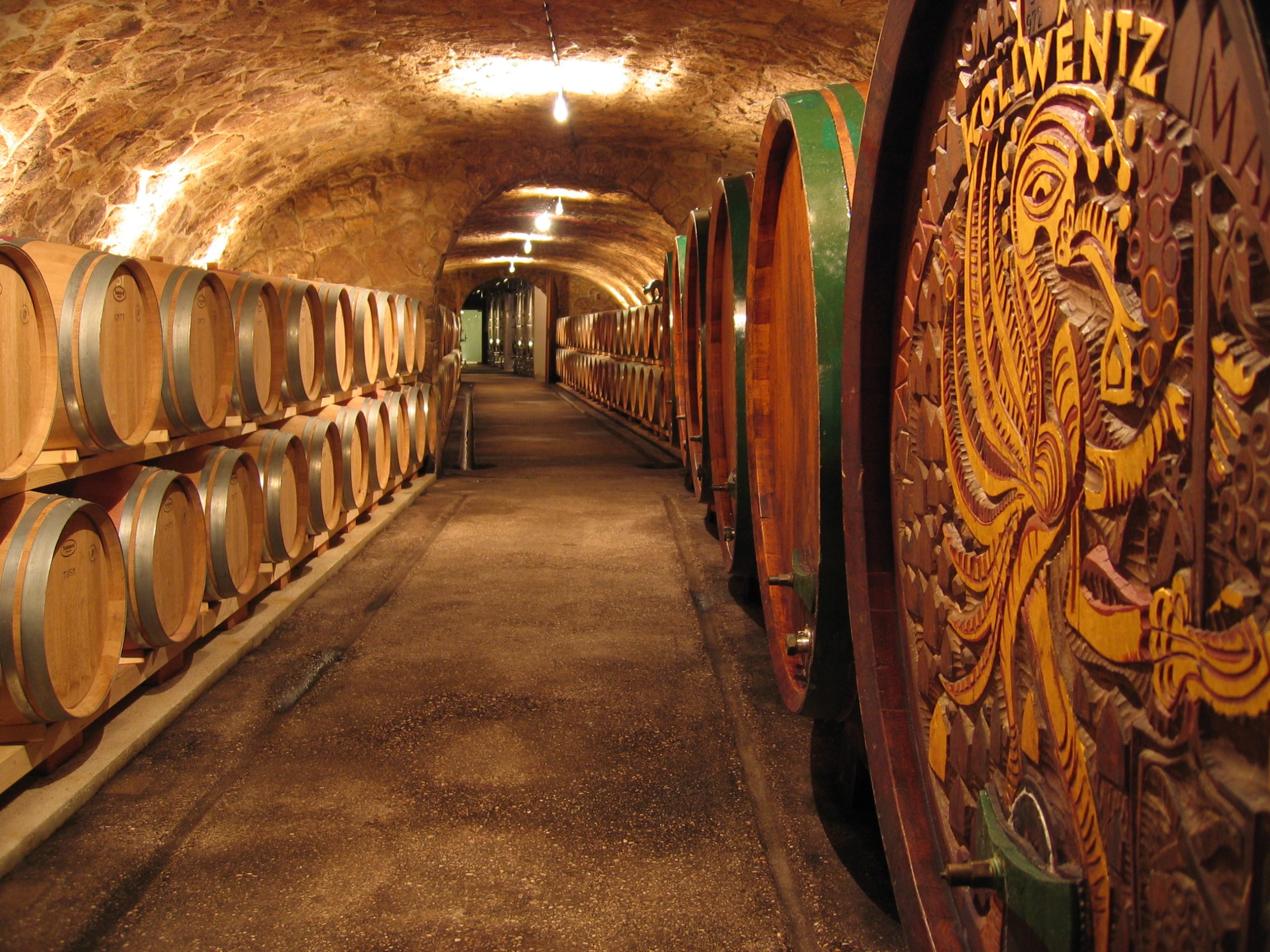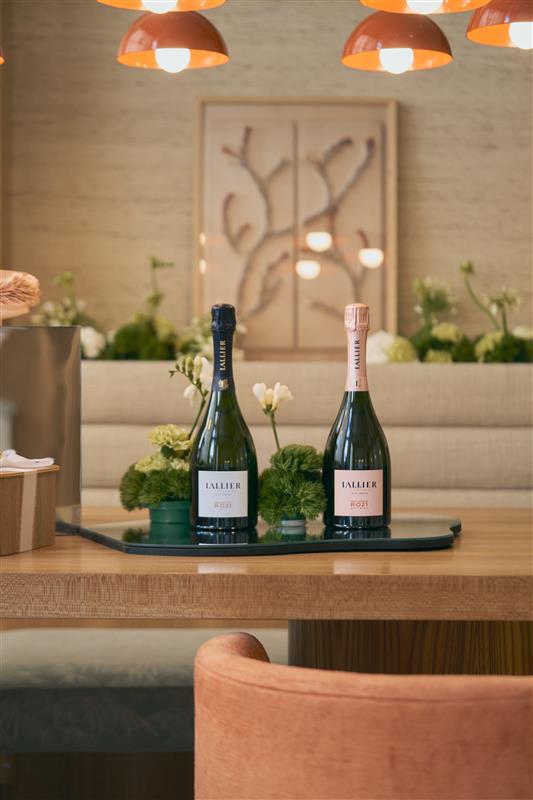Matching terroir to variety at Burgenland’s Kollwentz winery
Winemaker Andi Kollwentz advocates that different vineyards, even when almost neighbouring, can suit profoundly different wines.

You can imagine the smiles at Kollwentz, a winery in Austria’s Burgenland, as the national regulatory body made vineyard distinctions a key part of its identity. Studying and promoting individual vineyard sites has been a notable focus for the country’s official wine body in recent years.
Kollwentz, on the other hand, has been teasing out the differences of its vineyard sites for the last seven decades.
It may be a French term, but the concept of terroir has been whole-heartedly adopted in Austria. The country, although it produced around 5% of France’s output in 2023, has surveyed its vineyards more comprehensively than any other nation. This culminated in a publicly accessible map of its sites and last year’s introduction of a classification system. It is a level of detail so far unmatched in the wine world.
So, if you zoom into the vineyards around Großhöflein you will see the sites that Kollwentz uses to produce its award-winning wines. The family winery has 25 hectares of vineyards, producing a wide range of varieties. Although united by their locality, close to walkable in distance, their individual strengths help craft a distinctive range.
That is essential because winemaker Andi Kollwentz is termed by his team ‘the decathlete’ of Austrian winemakers. With a range of varieties going into his wines – including Chardonnay, Sauvignon Blanc, Zweigelt, Blaufränkisch and Cabernet Sauvignon, he has had to find the best sites for each.

Making the most of Austrian terroir
There are, of course, commonalities. Each enjoys Burgenland’s continental climate, and most have the south-facing slopes so prized for grape cultivation. However, the core consideration is which is best suited to each variety and, eventually, each wine.
Chardonnay, for instance, is planted in vineyards more than 200 metres above sea level. The elevation, in tandem with the forests on the hilltops that shelter the vineyards, creates a cool microclimate. That proves ideal for Kollwentz’s preferred style, which foregrounds aromatic finesse and intensity in the taste.
For Sauvignon Blanc, on the other hand, the Steinmühle vineyard represents the best terroir. It sits lower, at around 167m above sea level, and has a cooler northwest aspect. It also has ample flint deposits in the soil, leading to a fresh style that nonetheless has a distinctly spicy aroma.
For red varieties, the warmest sites are preferred. That is unsurprising – Burgenland has, in many ways, built its reputation as a hotspot for Austrian wines thanks to its warmer sites that facilitate full ripeness. Blaufränkisch is particularly prized, especially when grown in Kollwentz’s Setz and Point vineyards. The grapes harvested there contribute to the estate’s top wine, Steinzeiler.

Not content with simply expressing the best of local varieties, Kollwentz has also been instrumental in pioneering unexpected grapes.
Partner Content
Anton Kollwentz Senior first gained that reputation in 1958, when he advocated for Zweigelt to be planted in the region. He followed that with an even more audacious introduction in 1981, as he became the first winemaker to plant Cabernet Sauvignon in Austria. Both varieties now support Blaufränkisch in the Steinzeiler blend.
As his son Andi now follows his path, he continues that sense of exploration led by Burgenland terroir. His portfolio encompasses monovarietal and blended wines, whites and reds, dry and sweet wines, as well as brandy – a broad spectrum of styles for the ‘decathlete’ to master.
Moreover, the wines are pushing boundaries in terms of quality. This was evidenced in the drinks business Autumn Tasting 2024, where the wines took home top medals.
Below, Global Wine Masters offer notes for the award-winning wines.
Weingut Kollwentz Chardonnay Ried Katterstein 2021 
- Producer: Weingut Kollwentz
- Region: Leithaberg, Burgenland
- Country: Austria
- Grape variety: 100% Chardonnay
- ABV: 13.5%
- Approx. retail price: £65
- Medal: Master
Founded in 1775, Weingut Kollwentz continues a long history of producing fantastic wines. From the Katterstein vineyard on crystalline schist and limestone soil at 300m altitude comes this stunningly elegant Chardonnay. Pale yellow-coloured, the wine displays apricot, white peach and apple fruit, enhanced by notes of orange zest and white flowers, and balanced by svelte, creamy oak. Dry, the pristine palate is layered and textured, having great concentration and a lingering finish. Practically perfect in every way, the wine will pair nicely with sole Véronique.
Weingut Kollwentz Chardonnay Gloria 2020

- Producer: Weingut Kollwentz
- Region: Leithaberg, Burgenland
- Country: Austria
- Grape variety: 100% Chardonnay
- ABV: 14%
- Approx. retail price: £70
- Medal: Gold
Kollwentz’s Gloria Chardonnay is grown high on the Leithaburg, on fossilised limestone soils, producing this eminent wine. Pale yellow in hue, the wine has intense but delicate apricot, white peach and golden apple, highlighted by orange and lemon blossom, and subtle, toasty oak. Dry and concentrated, the palate is light-bodied with the flavours framed by very crisp acidity and showing a lingering, lifted finish. Gorgeous wine to match monkfish medallions with white mushrooms in a white wine and light cream sauce.
Weingut Kollwentz Steinzeiler 2020

- Producer: Weingut Kollwentz
- Region: Leithaberg, Burgenland
- Country: Austria
- Grape variety: Blaufränkisch, Cabernet Sauvignon and Zweigelt
- ABV: 14%
- Approx. retail price: £70
- Medal: Silver
Opaque and deep, with a bright ruby rim. A nice aromatic mix of pure cherry, blackberry and chocolate, joined by vanilla and violet. The palate is more restrained, finely grippy and chewy, with a touch of sour cherry and plum, plus fleshy cherry and chocolate in the core. Youthful, structured and interesting.
Related news
Zuccardi Valle de Uco: textured, unique and revolutionary wines
Non-vintage is ‘putting together a puzzle’ says Champagne Lallier




